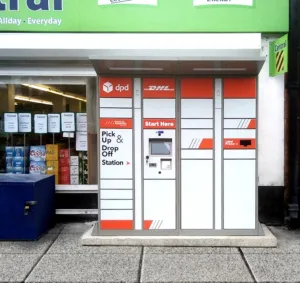By Roxanne Harley, Head of Strategy & Client Development at Azerion
Unless you’ve somehow managed to avoid hearing about it across social media, in the press, on billboards, or when talking to your neighbour, international megastar Beyoncé has been on her Renaissance World Tour since May this year. The Halo singer has taken the world by storm, with her fans travelling far and wide for a glimpse of their hero. And Queen Bey’s impact went beyond just creating memories for adoring fans.
After the first night of her tour, searches for ‘metallic cowboy boots’ surged by 488%, as fans got entirely caught up in the storm.
More recently, fellow pop icon Taylor Swift – who is currently on her Eras Tour – saw her fans crash ticketing websites across Europe during presales that stretched the definition of the word “exclusive”.
There’s no doubt that the pair have been running the world over the past few months, with consumers flocking to spend big to keep the entertainers they love on top, despite the fact we’re in the middle of an economic crisis.
Interestingly, according to ONS figures, the huge amounts of money that consumers are being asked to spend on these concerts is contributing to the worrying levels of inflation currently facing society. This shows just how much of an impact popular events can have on consumer spending and the economy as a whole.
A perfect duet
While Bey and Tay continue to make their fans shout “look what you made me do,” more than three-quarters of them are concerned about the impact of the rising cost-of-living. As a result, consumers are re-evaluating the products and services they purchase but – as is clear from the desire to still spend big on concerts – consumers’ souls won’t be broken, and they’re still keen to treat themselves to intentional, unessential purchases every now and then.
Brands have a great opportunity to capitalise on this intentional spending on and around popular events, by positioning themselves as the brand of choice when fans are searching for their Beyoncé-inspired clothing items, for example. As a result, brands should be targeting these audiences with products that are tied to events at the right time, in the right place. That doesn’t mean breaching copyright laws by selling knock-off merch with the performer’s face on it, it means being the brand whose metallic cowboy boots are the first choice for the consumer.
By meeting consumers when they are looking to make these intentional purchases, and making it easy for them to find products linked to events, brands can benefit from the ‘halo’ effect and, ultimately, use this to ensure customers return to the business for other purchases in the future.
I can see your halo
The key to capitalising on the intentional spending of consumers lies in data and the role it plays not just in targeting the right consumers, but also in the creative that is served to them.
Creativity has long been recognised as the driving force behind the most effective ad campaigns. However, the content that is filling those blank ad spaces has to be backed by data, helping the brand to prove their relevance to the consumer.
The modern consumer expects brands to be able to reach them at the right time with relevant content, but failure to do so may cause some bad blood, even if the creative is attention-grabbing. Brands need to resonate with consumers, and show an understanding of their needs, or they may end up losing out in the long run.
Though we are in the middle of an economic crisis, with consumers forced to give a lot of thought to the purchases they’re making, they will continue to treat themselves. Brands therefore have to take the right approach to capitalise on this, and make their products the treat of choice, particularly around major events and shows.
Attempts to market to people around popular events that they’re already paying substantial money for may not seem like the most sensible approach, but the love story with consumers’ favourite stars lasts way beyond seeing them perform for a few hours on stage. Brands have the opportunity to play on that, and be the angel that fans are looking for when searching for those cowboy boots.
*Azerion is a client of Bluestripe Communications, owned by Bluestripe Group, publisher of ECA










